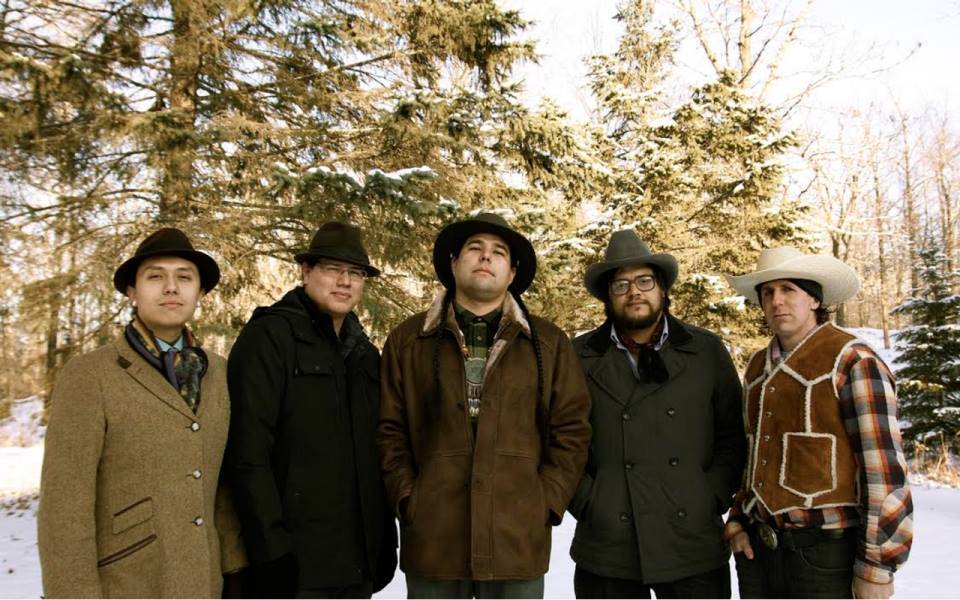Native American Sketch Comedy Group Promises 'Mix of Chippendales and Gallagher'

Image: Courtesy of the 1491s
It all started with a Twilight spoof.
Six years ago, a group of Native American friends decided to make a video satirizing the werewolves in the Twilight series—which, for the non-Twihards in the room, take the human form of Native Americans. The resulting YouTube video caught fire, and the 1491s were born.
The sketch-comedy group has gone on to make dozens more YouTube videos, racking up more than 6 million views and touching on everything from the Avatar to the Occupy movement to hyperbolically spiritual salesmen hawking dreamcatchers and turquoise jewelry. In advance of their live performance at the Portland Art Museum on Friday, April 22, we caught up with three of the five members about the hallmarks of Indian humor, the worst audience they ever had, and why their show is a little bit Chippendales, a little bit Gallagher.
How did that first YouTube video happen?
Sterlin Harjo: It was really just to make ourselves laugh—we didn't know yet how YouTube would let us speak directly to an audience. Our first video was a satire of the New Moon Wolf Pack. The Twilight series had these characters that were werewolves and were Natives, so we made a video about what the audition process would be like. We didn’t really have a plan, but it was such a good experience, and the video really started spreading.
Which videos have had the greatest resonance?
Bobby Wilson: That Wolf Pack video probably had the biggest resonance within Indian country. Another one that people bring up all the time is "Slapping Medicine Man."
What makes that one successful?
Harjo: First of all, Indian humor is something you have to get the rhythm of, something you have to be around. In that way it’s like Jewish humor, or British humor. There’s also a certain amount of self-deprecation. Anytime someone goes out on a limb and fails, that’s really funny. And as far as medicine men go, every Hollywood film about Native Americans has some medicine man in it, telling the wise story or whatever. I think non-Indians think of Native Americans as these mystical creatures that can heal people with plants and mystical things. "Slapping Medicine Man" is about holding your own people accountable and holding yourself accountable. Sometimes people want to slap the shit out of somebody and say, “Hey man, you keep doing the same shit over and over and over again. Why don’t you stop?” This medicine man is just like, “No, quit fucking drinking.”
What are other hallmarks of Indian humor?
Harjo: It’s style, rhythm. Sometimes it’s not the punchline. It’s the silence and what’s not said; the awkward silences and things. Some of it I can compare to the British Office. Sometimes it’s painful humor, and "Slapping Medicine Man" hits that directly.
Migizi Pensoneau: We have years and years of expectations about what Native people are supposed to look like, and we are constantly turning that on its head or subverting it. The expectation is for us to be these mystical, mythological creatures, people that are one with nature. And then we’re just chowing down on this fast food, shirtless. It’s a funny image.
How do you handle the more serious issues?
Wilson: Knowing we have thousands and thousands of viewers, we’ve been able to take numerous stances on issues we care about. You’ll find videos addressing issues of domestic violence; you’ll see a lot of stuff about Native imagery and racism. But there are a few things non-Natives expect that you won’t see: issues of alcoholism, or drug abuse, or just being poor and downtrodden. There’s a lot of stuff we don’t talk about.
Why not?
Wilson: As Native people, we’re hit with these expectations from outside the community, and sometimes internally, that we need to talk about drug abuse and alcoholism and things like that. As a comedy group, when people come to our shows, they expect “The Indian Show.” And then they show up and see this crazy group of out-of-shape guys jiggling their fat around and telling jokes.
Harjo: We like to say that our show is a mix of Chippendales and Gallagher—lots of fluids flying off the stage. We’ve had some pretty crazy shows. The worst was at the Denver Art Museum. The audience was Native American art curators from around the world, so it was bunch of white folks who love Native American art. They’re super serious about Native American art. They’re not used to laughing about Native people. When we showed up, we thought we were going to crack them up. But you could have heard a pin drop.
They were afraid to laugh?
Harjo: They’d been taking Native people so seriously for so long that it just wasn’t in their world to laugh at anything Native American. They hold it to this mystical higher place, and it’s very earnest, and they take it very seriously. So we were just doing our show, and Dallas [Goldtooth, another 1491s member] is basically in a G-string with a blond wig coming out that looks like pubes, and he’s dancing with a hula hoop in tights, and they didn’t know what to think of that. It was pretty awkward.
What’s next for the 1491s?
Harjo: We’re writing a feature film right now, and we’re also getting commissioned by this playhouse in Oregon—I don’t know if we’re allowed to say where, because they haven’t made the announcement yet. The feature film is taking up much of our time. It’s a comedy about tribal politics. It’s gonna be outrageous.
Anything else to know about your Portland show?
Wilson: Bring a poncho and condoms. It’s gonna get messy.
The 1491s perform at the Portland Art Museum on Friday, April 22, in conjunction with the exhibition Contemporary Native Photographers and the Edward Curtis Legacy. Ticket includes museum admission.
.
